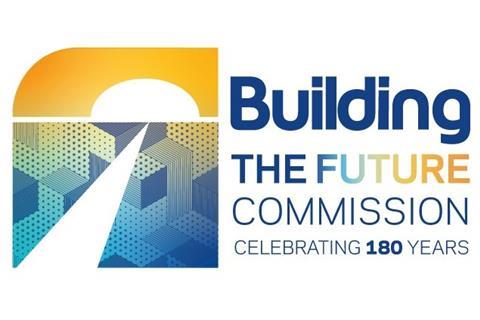Collaboration is the key to delivering safe buildings and every member of Team Construction needs to perform at their best, says Build UK chief executive Suzannah Nichol

The building safety legislation we have all been waiting for was finally published over the summer, setting out the details of the next phase of the new regime from 1 October. With just under a week to go, a lot of the outstanding questions have now been answered, but others will only be resolved as the new system beds in.
I recall a similar situation in the run-up to the implementation of the Construction (Design and Management) Regulations (CDM), and they are now second nature.

Even so, it is a lot to take in, and Build UK has been regularly updating its guide to the building safety regime to ensure businesses across the supply chain are aware of their responsibilities under the new legislation.
At the heart of it is being able to demonstrate compliance with the Building Regulations and ensuring that individuals and organisations that are appointed to undertake work are competent. When you look at the amazing things we build and the way they operate, it is clear that we already have the design expertise, the engineering skills and the specialist knowledge, along with many of the systems, required to comply with the new requirements.
Under the new regime, success will require a lot more certainty, including making sure that everyone has fulfilled their responsibilities
I cannot believe that any client has ever been content for their building not to meet the requirements of the Building Regulations, or any contractor has consciously used an incompetent supply chain. The key issue has been assuming that the baton of compliance has been carried by “someone” throughout the process.
Under the new regime, success will require a lot more certainty, including making sure that everyone has fulfilled their responsibilities – and that is where the major change needs to come.
The key requirement has featured in almost every industry report since Sir Michael Latham’s: collaboration. Construction can be complicated, but the real complexity comes in the financial model which leads to onerous contracts, disputes over payment and reams of bureaucracy – when what we really need is cooperation, trust and teamwork.
Just like in a relay race, the baton for building safety needs to be held by someone at all times and properly handed over; if dropped at any point, the team is disqualified. To make it round the track, the team needs to work together, rely on each other, and fine-tune the handover points.
We also need to focus on what is required and make sure we are not duplicating where we already have effective systems in place. There is so much to do; why would we reinvent the wheel and waste valuable resources?
We have proved we can do this. As a sector, we have already collaborated to reduce duplication in the pre-qualification process. The Common Assessment Standard, developed by Build UK and endorsed by the Construction Leadership Council (CLC), is backed by the industry’s largest contractors and clients, is specified by the government for use in the public sector, and has nearly 18,000 certified companies.
It is already used to meet the requirements under CDM and is now being updated to incorporate the similar requirements set out in the Building Safety Act. This will ensure that it can be used by all dutyholders to demonstrate the requirement for “organisational capability”, defined in the secondary legislation as having appropriate management policies, procedures, systems and resources in place.
Delivering safe buildings and restoring confidence in our sector is a team game requiring collaboration, and we need every member of “Team Construction” to be at their best
Another success is CSCS SmartCheck, which enables sites to confirm that the individuals working on their projects have the appropriate skills, knowledge and experience. With over one million cardholders, we have a strong foundation to integrate updated competence requirements and raise standards.
We can follow the same principles to meet other new requirements under the Building Safety Act such as the golden thread and mandatory occurrence reporting, providing consistent ways of capturing information to ensure that buildings are safe to occupy and incidents can be identified, reported and learnt from.
Delivering safe buildings and restoring confidence in our sector is a team game requiring collaboration, and we need every member of “Team Construction” to be at their best if we are to make it to the finish line.
Suzannah Nichol is chief executive of Build UK and will be taking part in a panel discussion on building safety and the future of construction at the Building the Future Conference this week
Join us at the Building the Future Commission conference

The Building the Future Commission Conference is set to take place in Westminster on 27 September. You can join us to hear from some of the leading figures across the construction industry and find out more about the work of the commission.
The day will include panel debates on net zero, digital transformation and building safety as well as talks from other high-profile speakers on future trends and ideas that could transform the sector.
Keynote speakers include Sir John Armitt, chair of the National Infrastructure Commission, Katy Dowding, president & CEO, Skanska UK, and Martha Tsigkari, head of the applied R+D group, Foster + Partners.
There will also be the chance to feed in your ideas to the commission and to network with other industry professionals keen to share knowledge.
You can follow our progress using #BuildingTheFuture on social media.




























No comments yet